This colliding pair of galaxies is a region of vigorous star formation which has been investigated for many years. Since 1990, four supernova explosions have been seen optically in Arp 299. Observations with the Very Large Array (VLA) showed a region near the nucleus of one of the colliding galaxies which had all the earmarks of prolific star formation. Observations with the Very Long Baseline Array (VLBA) and the Green Bank Telescope (GBT) in 2002 and 2003 led to the discovery of 5 supernovae concentrated in this region. In this image, the radio data (in pink) have been merged with a visible light image of the pair from the Hubble Space Telescope.
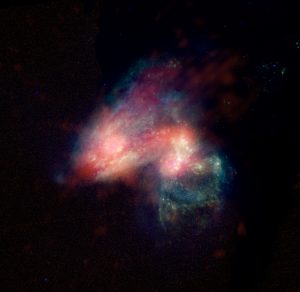
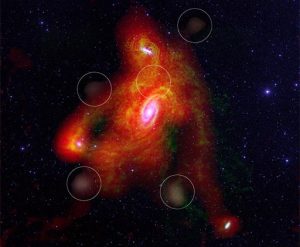
New Hydrogen Clouds in M81 Cluster
A composite radio-optical image shows five new clouds of hydrogen gas discovered using the Green Bank Telescope. The spiral galaxy M81 and its satellite, M82, are seen in visible light (white); the new hydrogen gas is colored red; and additional hydrogen gas earlier detected by the Very Large Array (green). The M81 Group of galaxies, 11.8 million light-years from Earth, are interacting gravitationally with each other, as shown clearly by the gas streaming among them. The newly-discovered gas clouds, each containing from 14 to 57 million times the mass of our Sun, are similar to gas clouds near our own Milky Way Galaxy. They are likely remnants of earlier interactions among the galaxies. Probably, the Milky Way has had a similar history.
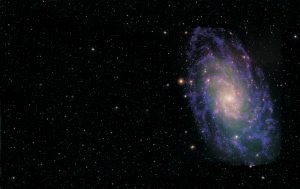
The Triangulum Galaxy in Radio and Optical
Galaxies contain hundreds of billions of stars. They often group together in clusters, with a history of sharing and tearing their gases and dark matter. This is the Triangulum Galaxy, also known as M33. It is in the Local Group of galaxies, which includes the Andromeda Galaxy and our galaxy, the Milky Way. M33 is over thirty thousand light years across, and more than two million light years away. The optical data show the many stars within the galaxy as well as reddish star forming regions that are filled with hot Hydrogen gas. The radio data from the Very Large Array (VLA) represented in blue, reveal the cool Hydrogen gas within the galaxy, gas which cannot be seen with an optical telescope. Combined together, the radio and optical give a more comprehensive view of star formation in this galaxy.
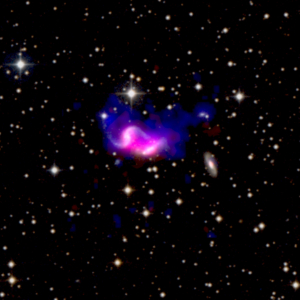
The Collision of UGC 813 and UGC 816
The “Taffy” galaxies are the results of a collision between two galaxies, UGC 813 (right) and UGC 816 (left). They were normal disk galaxies before they collided face-on at a speed of one million miles per hour about 50 million years ago. The disks of stars and dense clouds of molecular gas passed through each other relatively unharmed and are now separating. Diffuse HI gas clouds were stopped between the galaxies or thrown out in long tails, shown in blue. Disk magnetic fields are anchored by dense molecular clouds and are being stretched like bands of taffy between the galaxies as they separate. This bridge produces the radio continuum emission depicted in red.
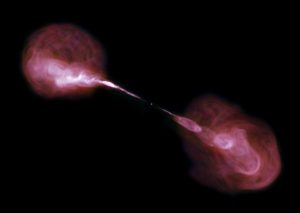
Hercules A in Radio
The Very Large Array sees fountains of hot gas erupting from a beastly black hole in the heart of a large galaxy known to radio astronomers as Hercules A. For millions of trillions of miles, these jets shoot through space, finally slowing when they reach ancient gaseous hiccups left behind by this galaxy’s earliest days of star-forming fury.
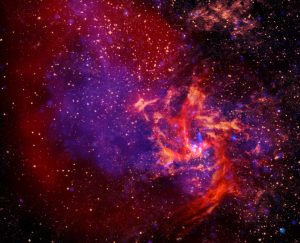
Sagittarius A
The center of our Milky Way Galaxy is anchored by a black hole that is nearly 5 million times the mass of our Sun. Surrounding it is a chaotic city of stars, gas, and dust that we call Sagittarius A. We stacked false-color X-ray, infrared, and radio images into this single picture to show you the different structures hidden inside the core of our Galaxy. X-rays (purple) radiate from the super-hot gas trapped in the black hole’s grasp. The surrounding dust is heated by friction as it chaotically orbits around the black hole and then glows in infrared light (gold). And the enormous pools and three-armed rivers of gas shine in radio light (oranges and reds) to trace the complexity of magnetic fields in this violent neighborhood.





